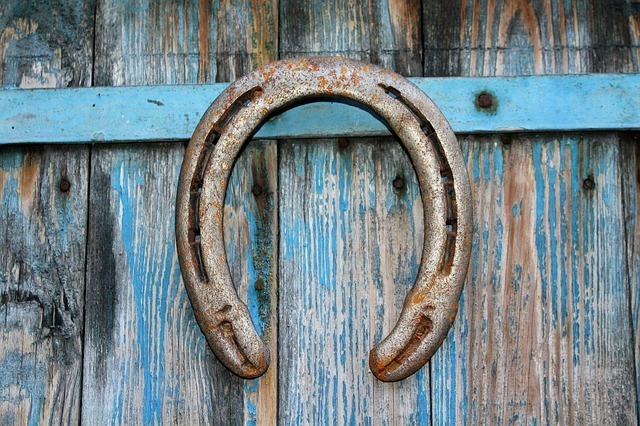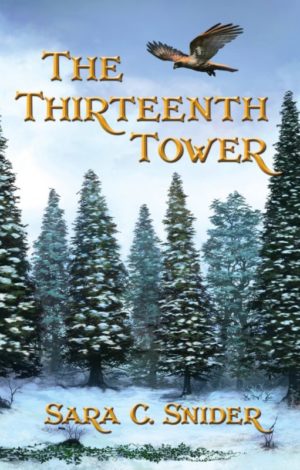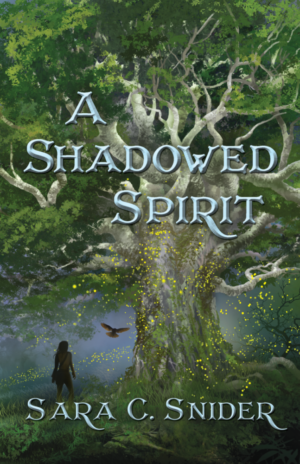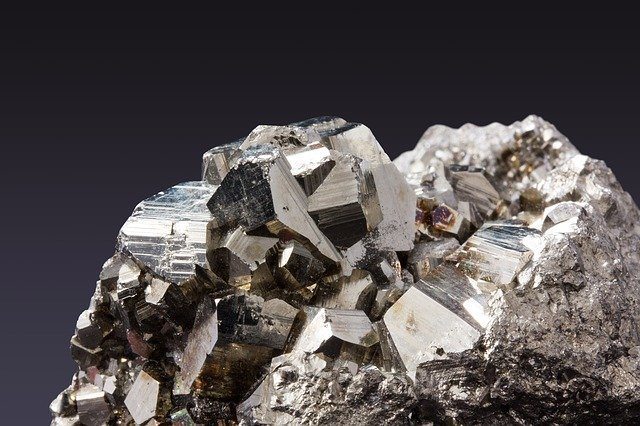I remember reading about fairies when I was younger and thinking how interesting it was that they were repulsed by iron. I think it’s because iron is such a common thing to us in this day and age. Forged iron is also, in my mind anyway, antithesis to nature. It’s a man-made thing, and I think I was enchanted by the idea of nature-faring creatures who can’t abide man-made goods.
A gift from the stars
Of course, iron wasn’t always such a common thing. Rather, it’s probably more accurate to say that the ability to forge iron wasn’t such a common thing. Iron itself is one of the most common elements on earth. It came from meteorites, a fact which did not escape the attention of ancient man.
The oldest iron artifacts known to exist are beads from ancient Egypt dating around 3,200 BCE, which is about 2000 years before the Iron Age. The ancient Egyptians called iron the “metal from heaven” so it’s perhaps not too surprising that they would believe such metal to be magical and from the gods themselves.
And if it’s a god-like element, then of course the gods would have knowledge of working it. The Greeks had Hephaestus, god of fire and metalworking, craftsmen and blacksmiths, to name a few. The Romans had Vulcan. The Slavic god Svarog is the god of celestial fire and blacksmithing. And the Egyptian god Ptah is a creator god who thought the world into existence and was revered primarily by craftsmen and sculptors, but also had a connection with fire that brought blacksmiths into the fold.
Within this context it is not a stretch to believe that blacksmithing was divine knowledge. Magical. And where there is the divine there is also devilry. One of the oldest stories known to exist is of a blacksmith dealing with the devil.
Blacksmith vs. devil
A story as old as this will of course have many different variations depending on the era and the culture in which it is told. But the core of it is a story of a blacksmith who outwits the devil and traps him in place, and the devil is only able to leave once he shares his knowledge of how to smelt and work with metal.

In the Christianized version the story is called “Saint Dunstan and the Devil.” In it, the devil takes on different forms and repeatedly tries to tempt and distract the blacksmith away from his work. But no matter the form the devil takes—whether it’s a comely maiden or a wealthy merchant—each time his cloven hooves give him away. The blacksmith, tired of the devil’s shenanigans, traps the devil with his tongs and only lets him go once the devil divulges more secrets of blacksmithing. He also promises to never bother the family of anyone who hangs one of the blacksmith’s horseshoes above the door of their home.
Cold iron
Of course, it’s not only the act of blacksmithing that’s considered magical, but the metal itself was believed to have magical properties. Iron amulets were found in the tomb of Tutankahmun to protect the sarcophagus from evil spirits. The Roman historian Pliny claimed that iron coffin nails on the lintel of a door would offer protection from wandering spirits.
Filling a bottle with pins offered protection from witches, and heating the pin-filled bottle would cause the witch intense pain.
And in Europe in the 19th century, iron bars were laid across beer barrels to protect the contents during thunderstorms.
In fact, iron’s capability of attracting lightning was considered magical. In the 18th century when the Christian church began using lightning rods to spare the poor bell-ringers a frightful shock, it was considered by some to be akin to witchcraft and tampering with diabolical forces. (And of course let’s not forget the bell itself, made of iron and magical in its own right.)
Back to the fairies
The significance of iron, the deities that worked with it, and the magic it contained dates back millennia. So when the church began to use iron it was seen as having power over the pagan deities to whom the metal once belonged. And if the church had power over the old gods, well then fairies and other pesky demons had no chance, did they?
Maybe.
But I kind of like my previous assessment, of nature vs. man-made creations. The Norse Völva shamans used wands of iron, perhaps suggesting that magic was a resource to be controlled and manipulated through human means. As opposed to, for example, wands of Wiccan witches, which are made of wood, and suggest a connection to nature and its magic rather than power over it.
It’s also symbolic, if you think about it. The ability to smelt and work with metal has led humans to build more complex tools, weapons, and structures that have taken us further away from our natural roots. Maybe it’s just a metaphor for man’s separation from nature; the beginning of our path that has led us away from realms more magical.
And in other news…
I’m having a sale on all my books this week. It’s partly to celebrate Hazel & Holly’s book-birthday as it was published last May! But also because I’ve been meaning to discount my books with all the Covid-19 craziness going on. Now’s the time to be staying at home reading or, you know, doing basically whatever. So… book sale!

Hazel and Holly
$7.99 $2.99

The Thirteenth Tower (Tree and Tower 1)
$4.99 $0.99

A Shadowed Spirit (Tree and Tower 2)
$5.99 $2.99

The Forgotten Web
$2.99 $0.99
*The Forgotten Web is on a different aggregator than my other books, and for some reason the discount hasn’t gone through to all the retailers. Still trying to figure things out!
Sale ends May 14th!
I hope you are all staying safe in this crazy world. Thanks for reading and take care!
Sources
Man, Myth & Magic: An Illustrated Encyclopedia of the Supernatural, Vol. 11, Marshall Cavendish Corporation, 1970
Dean, Remy, “Ferrous Friend or Foe? How Iron Became the Enemy of Fairy Folk” Folklore Thursday (May 5, 2020)
Dean, Remy, “Folk-Ore: The Magical Power of Blacksmiths and Their Enduring Stories” Folklore Thursday (May 5, 2020)
Faena Aleph: “Bottling protection against witchcraft” (May 5, 2020)
Gillespie, Aimee, “Ancient Egyptian artifact is otherworldly” EARTH (May 5, 2020)
Schultz, Colin, “The Ancient Egyptians Had Iron Because They Harvested Fallen Meteors” Smithsonian Magazine (May 5, 2020)


I never knew that was why people nail horseshoes to barns… Interesting. I think ironwork and glassmaking to be interesting trades. There is something mystical about molten iron and glass.
I didn’t know about the horseshoes either, so it was fun stumbling across that. Totally agree about iron and glass working being interesting trades. It looks scary, because they’re working with really hot materials, yet end up with something really cool and pretty.